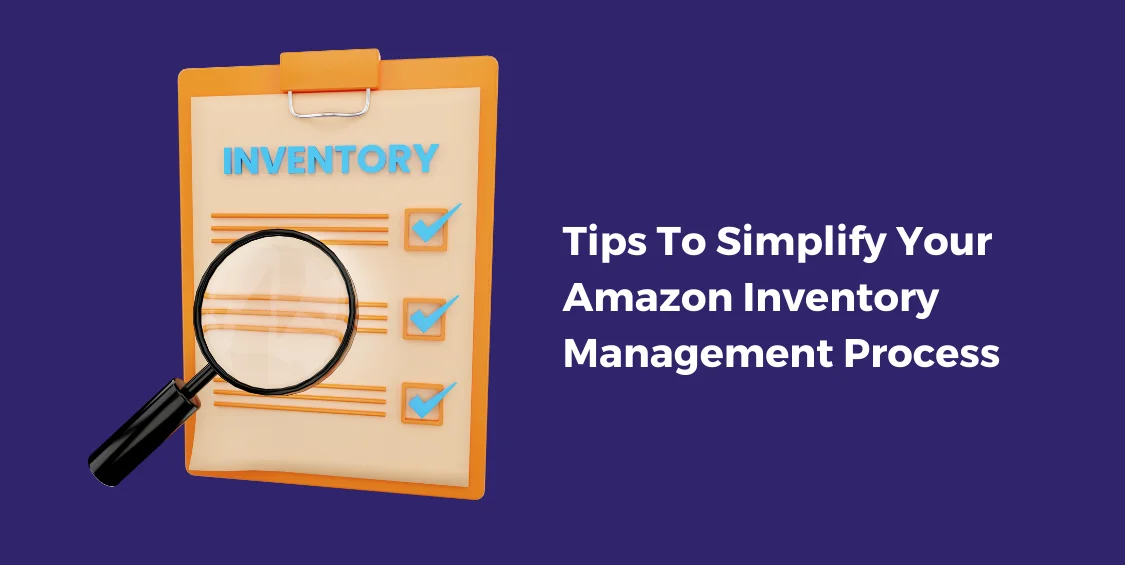If you’re an Amazon seller, make your inventory management practice as efficient as possible to avoid losing sales. With poor Amazon inventory management strategies, sellers frequently lose sales by running out of their products or incurring high costs due to overstocking of obsolete inventory, taking up storage space.
A good inventory management strategy is to achieve the perfect balance between understocking and overstocking your inventory. Working with experts can help you develop the right approach to reach the optimal level of stocking your Amazon inventory.
What is Inventory Management?
Inventory refers to the products you intend to sell through your business. In contrast, inventory management manages these products strategically and efficiently to meet consumer demands on time. It includes everything from procuring the products to determining where and how to store them and processing them before they are sold.
The symptoms of inefficient inventory management may not show immediately, but when they do, it’s usually too late. The seller may have spoiled products, insufficient storage space, dead stock, obsolete stock, or unfulfilled orders in his Amazon inventory. And with all this, the overwhelming cost of holding and storage space is added to the seller’s expenses.
How does Amazon handle Inventory Management?

Amazon uses several operational models to optimize its distribution strategy. Some of these operations models include;
Lean Inventory Management:
Lean inventory management is an operations model of having a sufficient minimum of inventory to cover the demand. This model’s secret is forecasting and balancing the stock level, as freezing too much inventory harms your business economy.
Vendor Managed Inventory
Vendor Managed Inventory (VMI) is an operational model that allows suppliers to restock products when it’s time to reorder. Under this model, third-party Amazon sellers manage their product supply within a retailer’s inventory. They send their inventory to Amazon’s warehouses, and Amazon handles the fulfillment process.
Digitizing Warehouse and 3PL
Amazon employs a third-party logistics provider (3PL) to manage its massive inventory. By partnering with 3PL providers, time, money, and warehouse space can be saved.
Amazon automates and digitizes its warehouses to efficiently manage distribution and fulfillment processes, using mobile barcode scanners and devices on a large scale. Mobile devices facilitate a round-the-clock cycle of order processing, item picking, shipping, and real-time stock visibility. Mobile barcoding improves both visibility and precision
Why is Amazon Inventory Management Important?
Nowadays, people prefer convenience over cost. Customers prefer next or Same-day deliveries, even if it means paying extra for speedy delivery. According to Jungle Scout, around 68% of online shoppers prefer same-day or three-day delivery times, while 47% will willingly pay extra for the product to arrive the same day. We can conclude that customers won’t wait for you to re-stock your product or would be okay with late deliveries.
So this means with poor inventory management, you will either be pushing your customers away toward your competitors with low stocks or be incurring additional costs with tied-up capital with an overstocked inventory.
Tips To Improve Your Inventory Management
Here are some tips that can help you reach the optimal level of Amazon inventory for your business;
1. Employing Amazon Inventory Management Software
Digitizing your inventory management process can help you keep track of your Amazon inventory levels much more efficiently than manual tracking. Retailers have seen a nearly 40% increase in inventory efficiency after integrating Amazon inventory management software into their business.
Amazon Selling Coach informs the sellers about the inventory levels and demands of the consumers. Moreover, using Amazon inventory management tools, you can even track the number of sales you make in a day, week, and month and help you identify the sales trends to maintain optimal Amazon inventory in different sales seasons.
Another great option to explore, besides Amazon Inventory management software, is Sellercloud’s warehouse management system. Its massive options of user-friendly features will make the process as seamless as possible. The tools allow you to track your products quickly, organize warehouse locations and components, adjust inventory, purchase or return products to the suppliers, and more
2. Following Up on the Inventory Turnover Rate
To truly understand our inventory turnover rate, you must know how quickly your products are sold on Amazon. Once you have determined your inventory turnover rate, you can use this information to determine how much stock to maintain between inventory shipments to avoid overstocking and understocking.
Using a tool that tracks the daily sales trends of your products is a more precise approach to predicting inventory turnover and reordering requirements. Amazon’s standard inventory forecasting tool, the Amazon Selling Coach, monitors sales against your available stock and recommends order-fulfillment quantities over a specified period, all from your Seller Central dashboard.
3. Preparing For Seasonal Sales
The first thing to focus on while planning for seasonal sales is identifying the products’ demands; Amazon sellers must be aware of the products that will have higher demand during certain seasons and which would have relatively low demand.
Once you’ve plotted the trends of the products, plan your Amazon inventory management strategy accordingly. Increase the quantity of the products that are likely to have a higher demand and remove or reduce the amount of the out-of-season products.
Consider suppliers’ extended turnaround times while pre-ordering for the sales season to allow a margin for delayed delivery due to peak sales season or unpredictable weather. Maintaining good terms with the suppliers also helps avoid unwanted delays in inventory shipments.
4. Reducing Excess Inventory Through Sales and Promotions
If you’ve overcalculated the demand for a specific product for the season and are left with excess inventory taking up your storage place, don’t worry! You can deal with redundant products in many ways without wasting them.
Promotion sale:
This includes introducing coupons, buy-one-get-one-free deals, or flat discounts to push your slow-moving inventory. The low profits you get from these offers will still cost less than what you would have to pay for the storage space occupied by your unsold merchandise.
Generate a removal order:
If you have other options for storage spaces besides Amazon, you may pass an inventory removal order on your Seller Central and have your inventory sent to you. This way, you can avoid getting charged large fee vouchers for the storage space. Amazon may also run promotions to clear up your inventory for free.
Liquidate Inventory:
After you’ve exhausted all of your options to clear up your inventory with a minimum loss, you may try liquidation. In this case, the Amazon seller may sell all excess stock in bulk at significant discounts to regain some of the invested capital.
Donate Inventory:
Another option to remove your excess Amazon inventory is donating it to NGOs as goodwill. If you decide to donate your stock, you may even write off the donated stock in taxes to compensate for some of the loss.
Implementing an Efficient Amazon Inventory Management Strategy
The blog covers the significance of proper Amazon inventory management for sellers to never lose customers for being short on their best-selling products. You may consult Amazon experts to devise and implement sound Amazon inventory management strategies to prevent overstock or understock inventory levels that may hinder your sales.
Get in touch with AMZDUDES to learn more about Amazon’s reliable built-in tools and Amazon inventory management system, such as Inventory Manager. Call us today for a free consultation.





